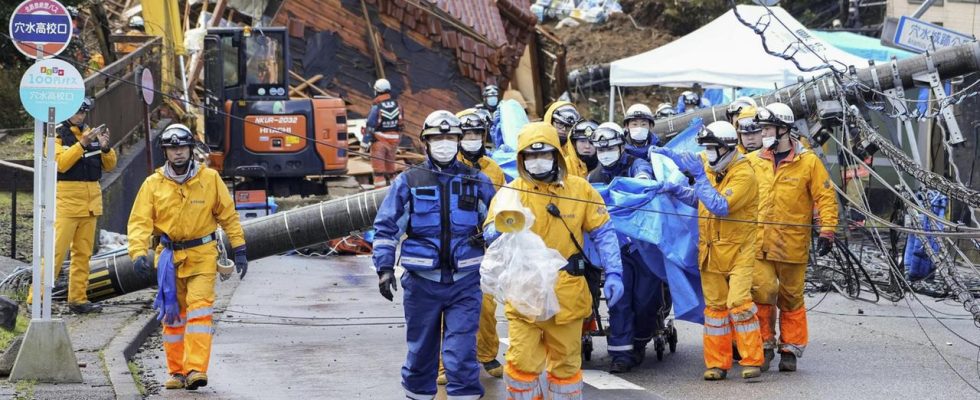Five days after the earthquake in Japan, more than 200 people are still missing. Tens of thousands are waiting in emergency shelters – diseases threaten to spread. There were several smaller earthquakes again in the morning.
Even days after the earthquakes in Japan, in some places on the west coast it looks as if the earth had just shaken. Debris and fallen trees are blocking roads, some of which have deep cracks. Although the government has significantly increased the number of rescue and relief workers, rains that are expected to continue throughout the weekend are severely hampering work in the mountainous area.
126 people have now been found dead, and more than 200 others are still missing. The likelihood of rescuing survivors five days after the earthquakes is slim. More than a thousand landslides and impassable roads are hampering operations, plus the weather conditions – according to the forecasts, it could even snow on Sunday afternoon.
In the Ishikawa region there were again several earthquakes on Saturday morning The strongest was measured at 5.3. Authorities urged residents to remain on alert – more tremors could follow.
70,000 people without running water
“We sincerely pray for the repose of the souls of the deceased,” said Japanese Prime Minister Fumio Kishida on the online service X, formerly Twitter. In an emergency meeting, he called on ministers to repair roads “urgently and quickly” to help hundreds of people in cut-off areas.
Because there is often no way through on land, the relief workers are now trying to supply trapped people with relief supplies from the water. Almost 30,000 people are still waiting in emergency accommodation, where the sanitation is said to be so poor in some cases that Prime Minister Kishida has already warned of illness. Almost 70,000 people still have no running water.
Coastline extended by 175 meters
Meanwhile, a team of researchers from Hiroshima University has found that the magnitude 7.6 New Year’s Day earthquake expanded the coastline of the worst-hit Noto Peninsula by 175 meters. The Earthquake Research Institute at the University of Tokyo even speaks of a displacement of up to 250 meters.
According to the University of Hiroshima, the ground was raised by the earthquake and sea water almost disappeared in some ports on the peninsula. Roads became impassable and a major fire destroyed a historic market district in the port city of Wajima.
Japan is hit by hundreds of earthquakes every year. Most do not leave any damage, which is partly due to strict building regulations that have been in place for decades. Over the past five years, earthquakes have increased in strength and frequency, particularly in the Noto region.
With information from Kathrin Erdmann, ARD Studio Tokyo
Kathrin Erdmann, ARD Tokio, tagesschau, January 6th, 2024 11:40 a.m

